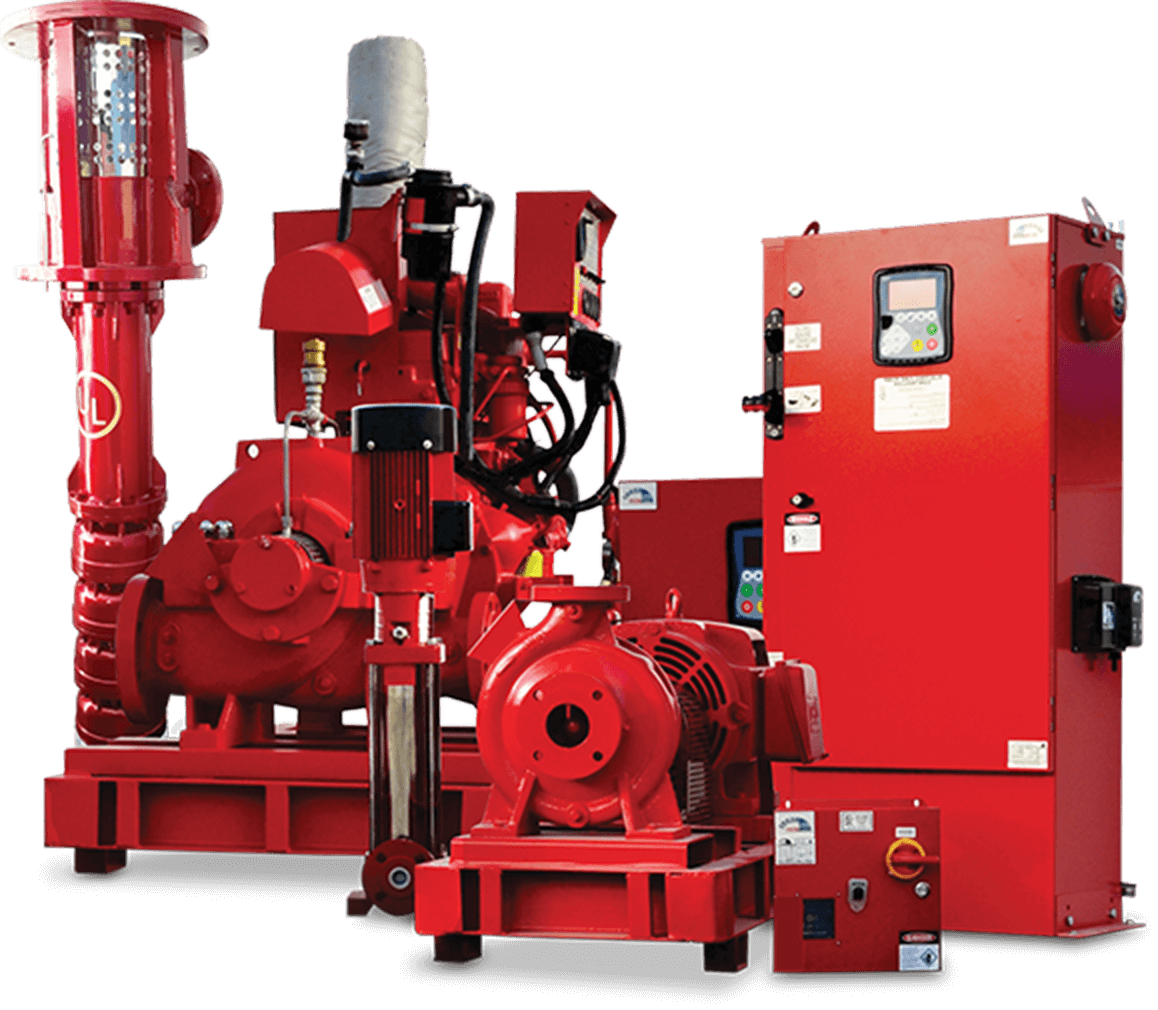Jockey Pump In Fire System
If you own a commercial or industrial facility, you know the importance of fire protection. But did you know that jockey pumps play a crucial role in ensuring your fire system is functioning properly? In this post, we'll dive into everything you need to know about jockey pumps in fire systems.
Pain Points
When it comes to fire protection, one of the biggest pain points is reliability. You need to know that your fire system will work when you need it to. Jockey pumps help ensure this reliability by maintaining pressure in the system even when the primary pump isn't running. Without a jockey pump, your system may not have enough pressure to function properly in the event of a fire.
What is a Jockey Pump?
A jockey pump is a small pump used in fire protection systems to maintain pressure in the system. It is typically used in conjunction with a larger fire pump that is only activated when the jockey pump can no longer maintain pressure. Think of it as an insurance policy – if the primary pump fails for any reason, the jockey pump ensures that there is still enough pressure in the system to protect your facility.
Summary
In summary, a jockey pump plays a crucial role in ensuring your fire protection system is reliable and functional. By maintaining pressure in the system, it serves as an insurance policy in case the primary pump fails. Without a jockey pump, your fire system may not function properly when you need it to.
The Target of Jockey Pumps in Fire Systems
One of the primary targets of a jockey pump is to ensure that there is always enough pressure in the fire protection system. This pressure is necessary to ensure that water can flow from sprinkler heads and other fire suppressants in the event of a fire.
At my previous job, we had a fire incident where we couldn't access the fire hydrant and the fire pump wasn't functioning properly. Thankfully, the pressure maintained in the system by the jockey pump allowed us to effectively contain the fire until the fire department arrived on the scene.
Jockey pumps are typically used in conjunction with other fire suppression technologies like water mist systems or CO2 suppression systems. They play a critical role in ensuring the overall effectiveness of your fire protection system.
How Does a Jockey Pump Work?
Jockey pumps are designed to operate automatically, so they don't require human intervention to function properly. When the pressure in the fire protection system drops below a certain level (usually around 10 psi below the system's rated pressure), the jockey pump is activated and begins pumping water into the system to maintain pressure.
Because jockey pumps are small and typically operate at low flow rates, they consume less power than larger fire pumps. This makes them an energy-efficient addition to your fire protection system.
The Importance of Regular Maintenance for Jockey Pumps
To ensure that your jockey pump is functioning properly when you need it to, it's important to schedule regular maintenance. This can include checking the pump's pressure settings, replacing any worn or damaged parts, and testing the pump's operation under various conditions.
If you neglect regular maintenance, your jockey pump may not function properly when you need it to. This could put your facility at risk in the event of a fire and lead to costly repairs or liability issues.
Question and Answer
Q: Do I really need a jockey pump in my fire system?
A: Yes, a jockey pump is an important part of any fire protection system. Without a jockey pump, your system may not have enough pressure to function properly in the event of a fire.
Q: How much does a jockey pump cost?
A: The cost of a jockey pump varies depending on the size and capacity of your fire system. You should consult with a fire protection expert to determine the appropriate size and capacity for your facility.
Q: How often should I schedule maintenance for my jockey pump?
A: You should schedule maintenance for your jockey pump at least once a year. Depending on the age of your pump and the conditions it operates in, you may need to schedule maintenance more frequently.
Q: Can I install a jockey pump myself?
A: No, it's not recommended to install a jockey pump yourself. Jockey pumps are part of a fire protection system, and it's important to have them installed and maintained by a qualified fire protection expert.
Conclusion of Jockey Pump in Fire System
In conclusion, a jockey pump is a small but critical component of any fire protection system. By maintaining pressure in the system, it ensures that your fire suppression technologies can effectively contain a fire when you need them to. To ensure the reliability and effectiveness of your fire protection system, it's important to schedule regular maintenance and have your jockey pump installed and maintained by a qualified professional.
Gallery
Jockey Pumps - SFFECO

Photo Credit by: bing.com / pump fire jockey pumps system sffeco fighting operation manual
High Pressure Jockey Pump For Fire Fighting System[CDLF 60Hz] Suppliers
![High Pressure Jockey Pump For Fire Fighting System[CDLF 60Hz] Suppliers](https://www.purityfire.com/uploads/201918151/high-pressure-jockey-pump-for-fire-fighting201912291421083871290.jpg)
Photo Credit by: bing.com / pump jockey fire pressure high multistage fighting 60hz system
Fire Pump Sets (Electric, Diesel & Jockey Pump) | Guard Master Safety

Photo Credit by: bing.com / fire jockey desventajas ventajas bombas motores
Electric Pump + Jockey Pump + Horizontal Pressure Tank Fire Fighting

Photo Credit by: bing.com / jockey 选择 图板 firefighter
The Jockey Pump, A Crucial Part Of A Fire Sprinkler System | Firesprinkler
Photo Credit by: bing.com / jockey pump sprinkler fire system part crucial pumps booster
0 Response to "Jockey Pump In Fire System"
Posting Komentar